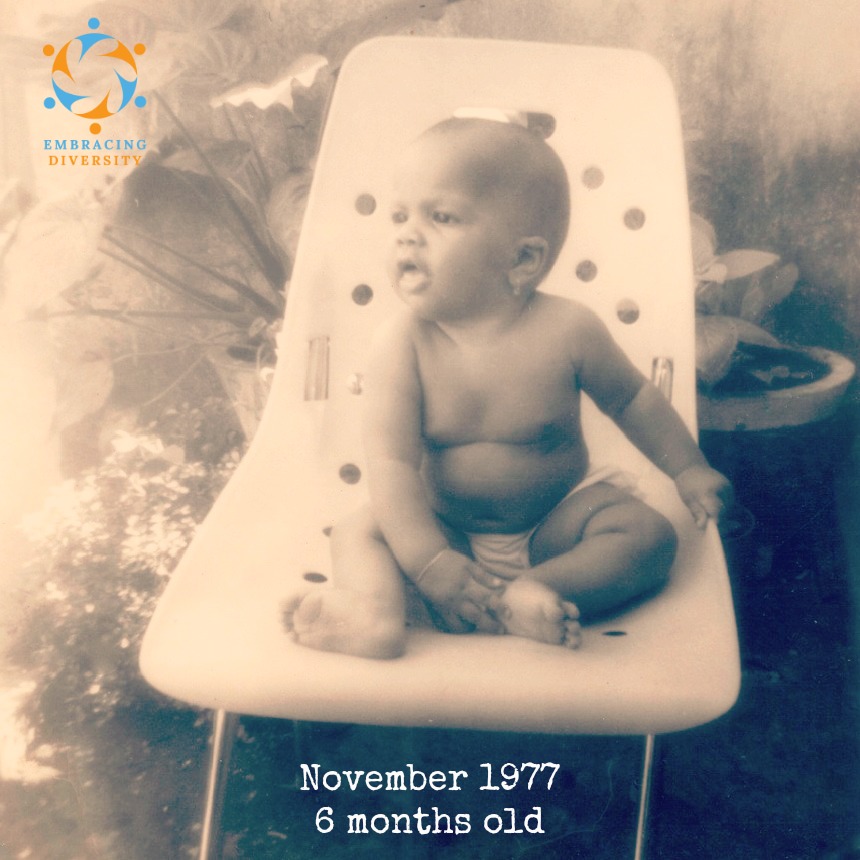
A few months ago, I started a personal project to document my life through a series of pictures and essays that I will one day give to my children, so they can understand where my life story began and, therefore, their origin. At some point, I decided it would be a good idea to share this on the blog, not only to create a digital record for my kids but also to allow all of you to get to know me better through a journey spanning the last four decades.
My life story began on May 1, 1977, a sunny Sunday morning. My parents, both in their twenties, were very young and living with my father’s mother in a house located in a poor neighborhood in the center of Santo Domingo. The address was José Martí 334, and my father had lived there with Mamá Amparo, his mother, since 1962. My mother moved in with them in 1972 after marrying my dad. It was a humble beginning, but my grandma owned the house, and back then, everyone knew each other, and it was safe.
In Latin America, May 1 is Labor Day, and at that time, the Dominican Republic had been under what is known in Dominican history as ‘Balaguer’s 12 years’ (los 12 años de Balaguer), a period that started a decade after the death of dictator Rafael L. Trujillo, which was marked by the killings of more than 3,000 people, particularly the young, educated generation that opposed the regime. This context is relevant because, on the day I was born, there was a gathering of the National Workers Union Assembly, which was met by the police with bombs and confrontation.

All of this happened later in the day, but earlier that morning, my mom woke up with contractions. This being her second time giving birth, she approached it with the calmness of an experienced mother. Like many Dominican women, preparing for labor included grooming and beautifying, and my mom was no exception. However, she wasn’t completely ready when the contractions started, so she decided to give herself a pedicure and manicure before alerting my father and grandma to the fact that she was in labor.
I wasn’t a witness to this, but I can imagine my mother with her usual determination to complete an unfinished task. I suppose this moment is where my life story truly began, as my mom, following the customs of other Dominican mothers before her, decided to be fully prepared before giving in to the pain and reality of bringing a child into this world.
Eventually, she woke up mamá Amparo and my father, who took her to the clínica. In the Dominican Republic, this means it wasn’t a public hospital, but a private one. I wasn’t born in a fancy hospital, but the fact that it was private suggests we weren’t the poorest of the poor. In the Dominican Republic, giving birth in a private hospital versus a public one can mean the difference between life and death. So, even though my life began in humble circumstances, I still had some privilege.

My father returned home, and when he was called back because it was time for me to be born, he was met with the chaos of the riot. What would usually be a 10-minute drive from the house to the clínica took him more than an hour. The Clínica Doctor Rosario was located on Calle 20 at the corner of Manuel Ubaldo Gómez, in the same area of Santo Domingo where we lived.
I’m fortunate enough to have many pictures from my first two weeks of life; my father loved taking photos, a passion I inherited from him. There are also a few more photos from my first year of life. Some weren’t in good enough condition to scan and share digitally, but I’ve included here what I could.
Where and when I was born are key to who I am; my identity is deeply tied to being from the city of Santo Domingo and my humble upbringing. However, my life has always been full of contrasts, thanks to the generosity of many who provided my sisters and me with things and opportunities we wouldn’t have had otherwise. But that’s a topic for another post, as I’ll be telling these stories in chronological order.
How much do you know about your birth and your family’s situation at the time you were born?

Leave a Reply